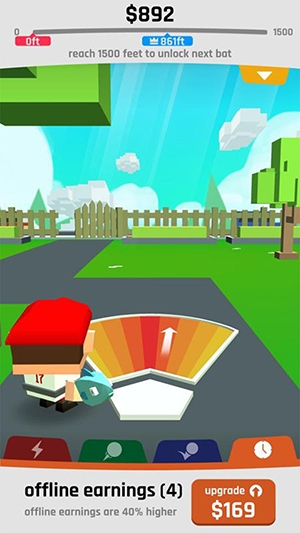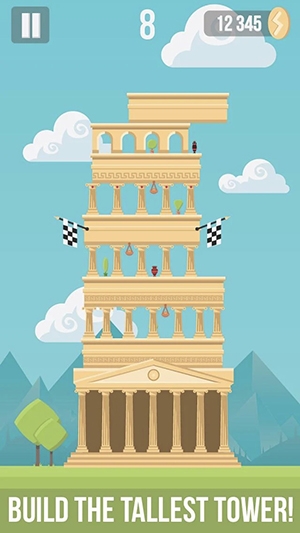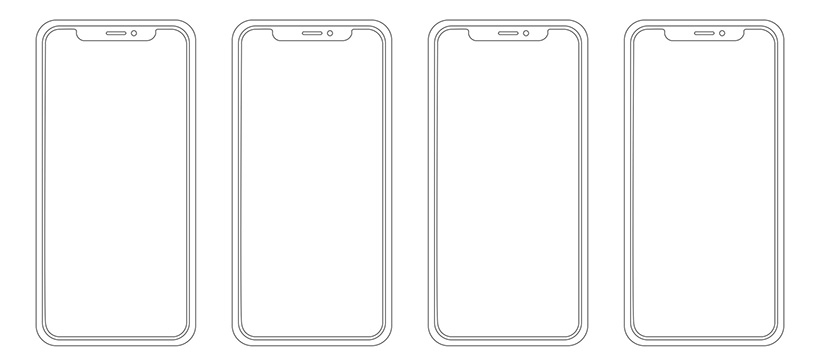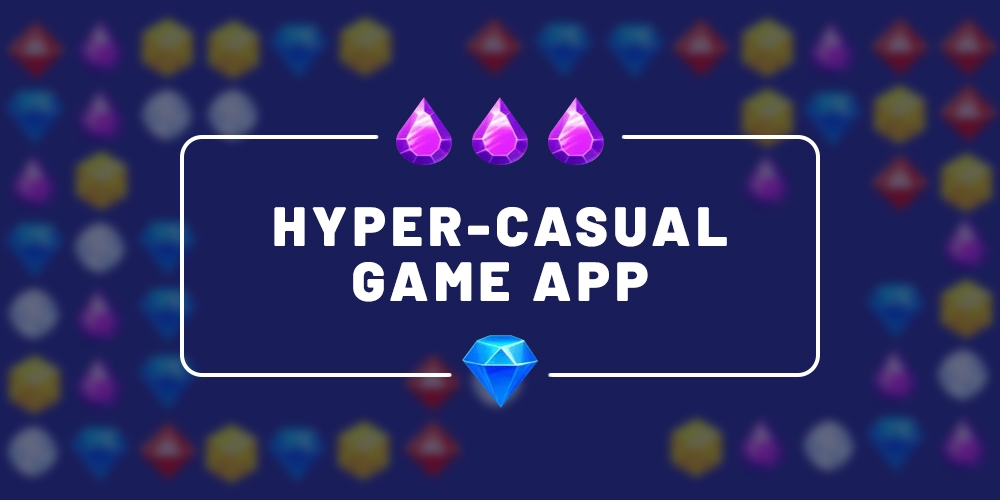Hyper-casual mobile apps have become a big thing and got people talking. Though this type of games is nothing new, it skyrocketed in recent years only and gained attention of big investors. In 2016, Ubisoft bought Ketchapp and famous Voodoo company saw $200 million in investment.
What’s the deal with hyper-casual apps and how to create an app that would bring you on top? Let’s break the science down.
Hyper-casual apps: what are they?
In general, there are three app categories, which are casual, mid-core and hardcore. Casual games are the simplest of them, while gamers of the hardcore apps require more socialization and are willing to make in-app purchases. Now, one more app category appeared, which is hyper-casual apps.
As the name implies, hyper-casual apps are instantly playable and lightweight.
 One more thing about hyper-casual games is that they don’t have many IAP (in-app purchases) and some of them don’t bother with them at all. This type of apps is monetized with ads, but we’ll see the monetization strategy in a while.
One more thing about hyper-casual games is that they don’t have many IAP (in-app purchases) and some of them don’t bother with them at all. This type of apps is monetized with ads, but we’ll see the monetization strategy in a while.
What you need to remember for now is: hyper-casual is instant, fun, and addictive.
Mechanics of hyper-casual apps: top-3 examples
If you are thinking about building a hyper-casual app, you have to be familiar with the most popular mechanics.
Tap/Timing
This mechanics is one of the most popular ones. Its idea is simple: a user has to tap on exact time, where the perfect tap brings the highest score. Such games have really simple design as nothing should distract the player from the gaming process.
What is important for tap/timing games are the visual elements. They should represent bad shots clearly and have an attractive and visible positive reinforcement for the “perfect taps”.
Example: Baseball Boy by Voodoo

Stacking
As the name implies, the player has to stack the objects by tapping them. In such games, previous taps impact the overall progress and game complexity grows as the user proceeds further.
Stacking games in general have 5-10 points of failure but each failure allows the player to continue. As well, make the game difficult enough so the player has up to 40% of imperfect timings.
Example: The Tower by Ketchapp

Dexterity
These games require skill, speed, and dexterity from the user. The gaming process is usually very simple and has one repeatable action, but the game speeds up and grows harder.
In dexterity games, one mistake will end the round and the player starts from the very beginning. Thus, the most important parts of the game are controls and input sensitivity.
Example: Timberman by Digital Melody

The outline of game development process
Here we’ll have a look at the basic steps of the game development process. To create a gaming app, you’ll need:
- Computer: to install a game engine on it. Depending on the desired platform, you’ll need either a PC or a Mac.
- Smartphone: to test the game. Again, it would be either an iPhone or Android (or both!).
- Developer’s account: to be able to submit the game to the stores.
- Tools: you can either use free available assets or create your own (like music or backgrounds).
As for the game engines, there are four options to choose from:
- Game templates: you can change only the characters, background and music. This is a ready-to-use option where you don’t create anything new but use available components instead.
- Drag and drop: this is also an option for the beginners. You will be able to apply a certain behavior to a game object (i.e. if I tap, a ball will jump).
- Visual scripting: you won’t code but still will be able to create “nodes” to represent actions for the game objects.
- Coding: this one is clear. With such type of game engine, you’ll create everything from the scratch and that’s what game app masters do.
Check out this article for more info on game engines and their overview.
Now let’s get down to the actual development process. Since the creation of hyper-casual apps, in general, is the same as creation of almost any mobile game app, we describe a standard framework.
Step 1. Set goals and list everything down.
Though seemingly easy, these steps are important.
You want to outline your strategy, define business goals (is it success, lots of money or first try?), and list down the vision of your future app. Depending on the goals and the app, you can proceed with choosing a platform and creating a marketing strategy.
Step 2. Wireframe
By creating a wireframe, you will be able to visualize the app and create its initial design. This will serve as a basis for the further app development.
 You can find plenty of tools for wireframe creation online.
You can find plenty of tools for wireframe creation online.
Step 3. Define the backend
In this step, start thinking about the servers, APIs, and data diagrams. Clear diagrams are necessary, as they will show everyone on the team the project outlines and its progress.
Do some research and check out the available app builders or similar services (like Parse). Once you are OK with the backend, set up the servers, databases, and API.
Step 4. Build the app.
This is the actual development stage where you will put your app together. Since you want to know about the creation of hyper-casual apps, here are a few aspects to consider:
- Chose the mechanics: here you can find the top-10 examples of mechanics for hyper-casual games.
- Stick with minimalistic design.
- Pay huge attention to controls.
- Do not ask to register, login, or whatever. Keep it as simple as possible.
- Pay attention to UX and UI.
Step 5. Test and upload
Another crucial part of app development is testing. Make sure there are no bugs, lags, or irritating elements and work on your app until your test users are 100% satisfied.
After that, study the store guidelines and follow them to upload your app.
The cost of creating an app
The cost of an app will depend on the platform, components, design complexity, and other factors. To make it simpler, at DashBouquet we offer an MVP calculator to give you an idea about the average price that you can expect.
However, there are some average numbers. As Clutch states, the median cost of an app development is approximately $170,000 and the range can be between $100 000 - $500 000.
What we can advise you is find a development company that specializes in mobile applications solely. Such companies normally have rich portfolios and good expertise and can deliver high-quality results in accordance with your requests.
Summing up
If you are thinking to create another “Flappy Bird”, get ready to either make it or break it. There are hundreds of similar games out there and only dozens make it big. However, if you have a unique idea or stellar design, chances are high you’ll succeed.
Just keep in mind the aspects of developing this type of games and stick to it. Think of a following example: a person is waiting for a bus and has a few minutes to play your game. Will it be enough? Will the player be able to complete at least a round before the bus comes?
Being the experienced app developers, DashBouquet team is aware of the possible pitfalls and will gladly help you avoid them.



